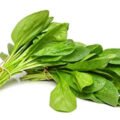About Cabbage
Cabbage, which is also known as cauliflower in certain regions, is an edible plant that belongs to the same family as broccoli and Brussels sprouts. Cabbage can be eaten raw or cooked, and it can be served as part of numerous different meals, including soup, salads, and stir-fries. Read on to learn more about this tasty food!
Cabbage, an annual plant of the mustard family, is a leafy vegetable that grows best in cool temperatures. It has been cultivated for at least 3,000 years and was probably one of mankind’s first true agricultural products. There are three main types of cabbage: green cabbage (or heading cabbage), red cabbage (or purple cabbage), and savoy cabbage. The term cabbage comes from Middle English caboche (head), from Old French above (cabbage head), both Latin caput (head). Savoy cabbages get their name from Savoy in France where they were grown since Roman times.

Nutrition Facts
Cabbage has few calories and vitamins when compared to other vegetables. One cup of chopped raw cabbage contains 16 calories, 0 grams of fat, 3 grams of carbohydrates, and 1 gram of protein. It also contains a moderate amount of vitamin K, manganese, and vitamin C. The vegetable also provides some dietary fiber (2 grams), iron (0.6 milligrams), and calcium (19 milligrams). Like most vegetables, cabbage is low in sodium. The food’s potassium content is 488 milligrams per cup. Vegetables that grow above ground typically contain less potassium than their subterranean counterparts because they don’t have as much soil blocking nutrients from reaching their roots as root vegetables do.
Types of Cabbage
There are several different types of cabbage out there, and they can be grouped into 3 categories based on their characteristics: hard-headed cabbages (Chinese cabbage, Napa cabbage), loose-leafed cabbages (Savoy cabbage, bok choy), and stem cabbages (green cabbage). All 3 types of cabbages can be eaten raw or cooked. They tend to have similar nutritional profiles (containing Vitamins A, Bs, C, K, and potassium) but also contain unique compounds that may help fight cancer.

How to Select and Store
There are several different varieties of cabbage, with Savoy cabbage being one of the most popular. It has a mild, slightly sweet flavor and distinctive crinkly leaves. Green and red cabbages are sweeter and milder than savoy but have less fiber and vitamin C content than their white counterpart. Regardless of variety, when choosing your cabbage look for heads that have tightly closed outer leaves with no brown or yellow spots; avoid any that feel light for their size or those with bruises or soft spots on their shoulders. You can store your cabbage in a perforated plastic bag in your refrigerator’s crisper drawer to keep it fresh for up to 2 weeks.
Planting
Cabbage can be grown as a garden plant or in pots. It requires more nitrogen than other plants, so it’s important to add manure and soil with extra nitrogen when planting. Start by planting cabbage seeds directly into garden beds that have already been prepared with nutrient-rich soil. Sow seeds 1/2-inch deep and 2 inches apart, making sure to cover them with an additional 1/2 inch of soil after they sprout. Water regularly until germination occurs between 7 and 21 days, depending on conditions. Plants should be ready for harvest after about 70 days in colder climates or 90 days in warmer areas like Texas and California.

Benefits Of Eating Cabbage
With good reason, cabbage has become one of America’s favorite vegetables. Low in calories and high in fiber, vitamins, and minerals such as potassium, vitamin K, folic acid, iron, and magnesium. Cabbage contains substances called phytochemicals (or phytonutrients), which are plant-based nutrients that can help prevent certain diseases in our bodies. Some of these compounds include indoles and coumarins that help prevent breast cancer in women as well as help reduce cholesterol levels.
Cabbage also contains anthocyanin pigments, which may give some protection against cardiovascular disease and even support healthy blood pressure levels. A great option if you’re trying to lose weight or simply eat healthier…as it provides all those benefits without a lot of extra added fat or calories from other sources. You can enjoy it on its own raw, or use it raw or cooked in everything from soups to salads, stir-fries, and veggie burgers. The possibilities are endless with cabbage!
Green Cabbage Recipes
One of my favorite cabbages to use in recipes is green cabbage, which usually comes in large heads with several leaves surrounding a dense, solid core. The outer leaves tend to be darker than those closer to that core, but they’re all tender and delicious (and are often used interchangeably).
As you move further into the head and get closer to that core, you can start removing layers of leaves as well—or continue pulling out entire leaves as needed for your dish. Green cabbage goes with just about any cuisine you could imagine. It’s especially nice in salads or alongside fish or chicken. It can also be cooked down into a sauce or used as a bed for other proteins like pork tenderloin or stir-fried beef.

